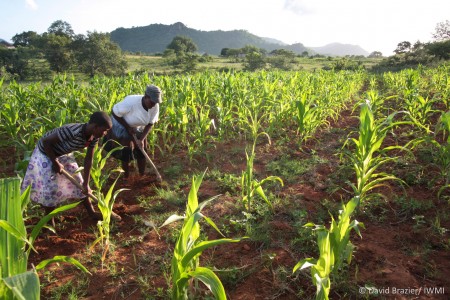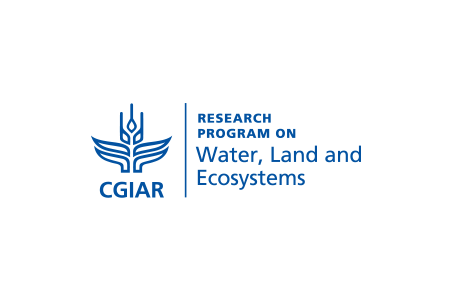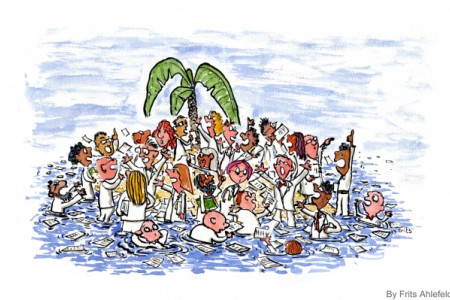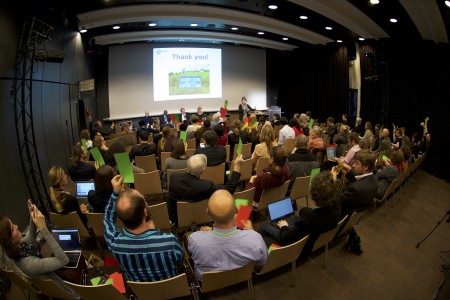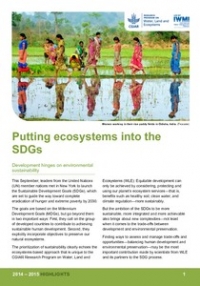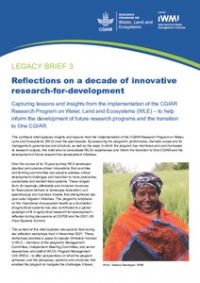Thinking across SDGs
With the passing of the Sustainable Development Goals (SDGs), the world has finally caught on to the need to ensure a new kind of triple bottom line: environmental sustainability, social equity and economic growth. Nevertheless, implementing complex, integrated approaches to achieving this bottom line requires careful balancing between the environmental, social, and economic dimensions of specific development challenges. Unfortunately, it is oftentimes much too easy to address one of these three pillars in any specific situation and let the other two fall by the wayside.
For example, ending hunger and achieving food security in any given country may compete with an agenda to mitigate climate change through biofuel production: both endeavors might be competing for the same land and water resources. So, which do you choose to address first? The logical priority for many countries may be to choose the social benefits of food production over the environmental benefits of green energy.
Achieving the other SDG targets may require even more difficult decisions regarding trade-offs when they are compared to earlier development goal schemes. The scale of the SDGs and the context in which they are being implemented are very different from that of the Millennium Development Goals (MDGs). The MDGs consisted of just eight goals and 18 targets, whereas the SDGs have 17 goals and 169 targets. The world is also a much more connected and integrated place in 2016 than it was in 2000. Global financial markets, supply chains, people and the climate are more connected than ever. This interconnectivity presents huge opportunities, but also significant systemic risks, as evidenced by the impact of weather shocks and financial crises on 2008 food price spikes. To begin to address deeply interconnected challenges such as these, we must gain an understanding of how best to fit all the SDG puzzle pieces together in a logical manner. The SDGs are only attainable by properly managing these interactions and minimizing trade-offs.
A draft framework for understanding SDG interactions
The International Council for Science (ICSU) recently published a paper titled "A draft framework for understanding SDG interactions." This framework can enable policymakers to navigate through the various interlinkages across SDGs to avoid achieving one goal to the detriment of others.
The ICSU’s draft framework presents a seven-point scale to assess the types of interactions between the three pillars of sustainability, to gauge the extent of negative trade-offs and to identify positive synergies. Ranging from “cancelling” on the lowest point on the scale—where progress in one goal cancels progress in another—to “indivisibility” on the opposite end, in which progress in two or more goals is inextricably linked. The framework can serve as an assessment tool to help organizations and policymakers decide how compatible the goals and targets are with one another. For example, increasing agriculture in drought-prone areas may help attain important social targets on poverty reduction and food security, but such intensification can also reduce biodiversity levels in these fragile environments.
To apply the SDG interaction framework, nine elements of analysis are suggested. These include geographical context—where goals and targets play out—and time sensitivity, as solutions over the short-term may have significant negative implications over the long-term.
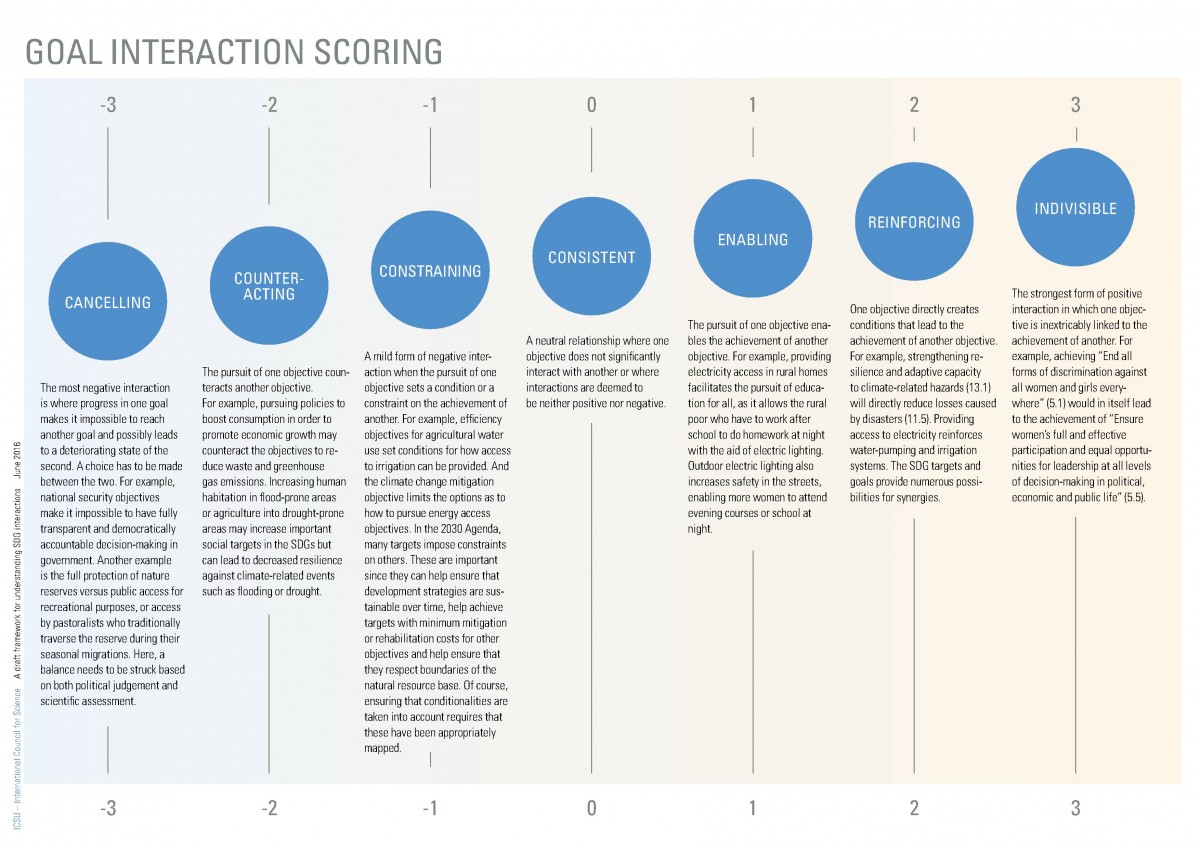
WLE is very much focused on understanding and engaging with decision-makers to address such trade-offs. In the Mekong, WLE is examining the trade-offs between hydropower development and environmental degradation. Hydroelectric dams might provide cheap and clean energy today, while longer-term degradation of river systems and deltas is often under-assessed and under-addressed, despite possibly significant longer-term impacts on food security and social stability.
The use of solar pumps to extract groundwater presents another set of tradeoffs that can be clarified by the new SDG interaction framework. Solar pumps have been identified by the Indian Government as an important solution to the water and energy crises in the country and, moreover, as a climate-smart agricultural practice. While such pumps are important to achieve climate change and food security goals, their impacts could be devastating for the already fragile groundwater environment in the country. WLE, together with its sister program CCAFS, has therefore developed a program that assesses the potential options to sell solar-generated electricity back to overwhelmed energy utilities rather than pumping groundwater for low-value crops.
Although the framework rightly identifies the need to invite scientists, policymakers, and practitioners to unpack the interactions and explore how the SDG puzzle fits together, it will also be essential to involve local communities in this conversation. This has been apparent during discussions on solutions around solar pumps, and for identifying solutions for groundwater governance: recent research on local water management practices in India and Colombia has demonstrated that it is possible to foster an understanding of solar groundwater pump tradeoffs that leads to sustainability-oriented mindsets in local communities. It is the end users, especially the rural poor, who will bear the brunt of the under-appreciated trade-offs and missed opportunities embedded in the interlinkages between food security, climate change, and sustainable groundwater usage. Only through incorporating their local knowledge and insights can solutions be sustainable over the long-term.
Our understanding of these interactions is increasing, but our ability to manage them remains limited. Despite the costs and extra time it may consume, we need all players at the table if we are to find practical and sustainable ways to ensure that each of the SDG puzzle pieces fit together properly for everyone.
The next step for this framework is for it to be road tested through the identification and development of case studies. WLE is also looking for case studies that examine the trade-offs and synergies between different water, food and energy goals. What are you working on that demands a more cross-cutting analysis of trade-offs? Let us know!




